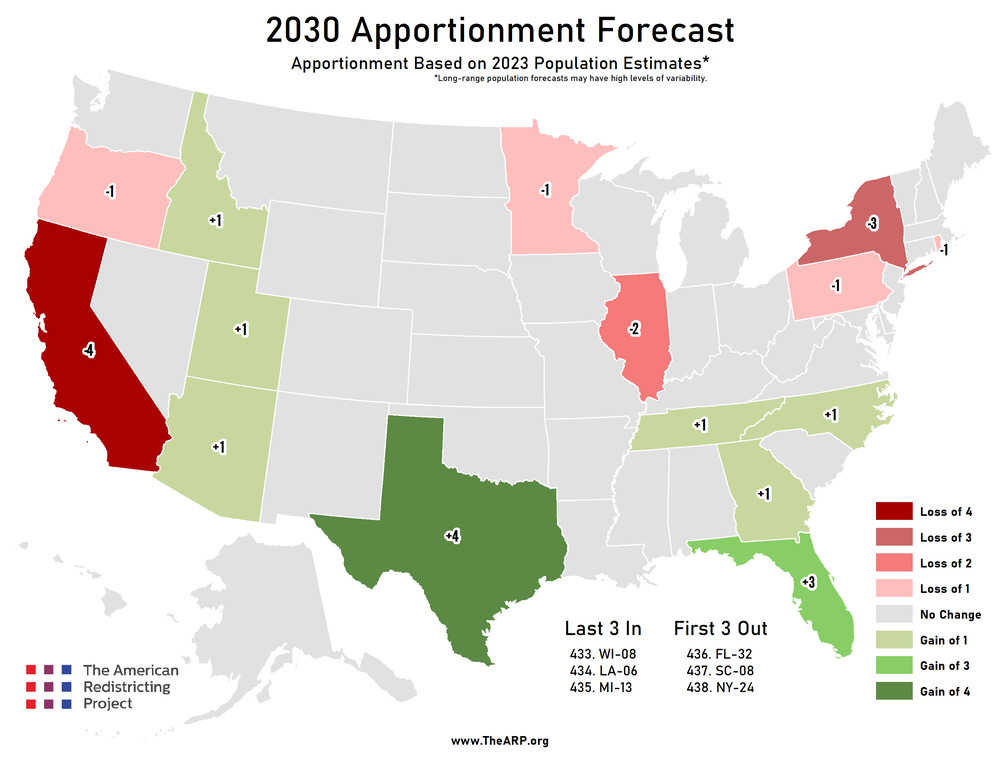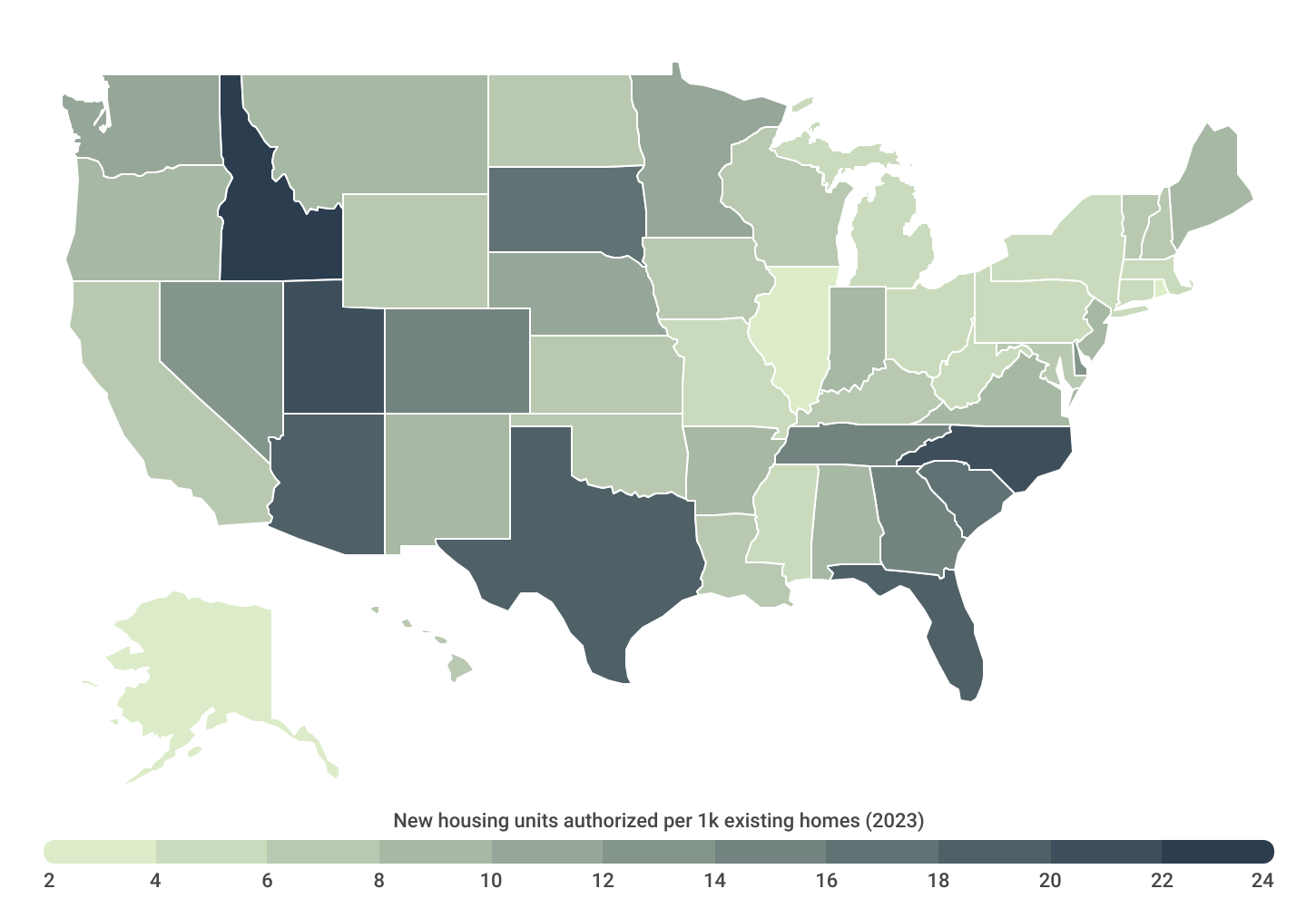Call It Blue Tape
Down with anti-government sentiment in blue states // Interstate praise of the federal system
See the follow-up piece “Is the Blue Tape Really That Bad?”
We are attached to a story of American decline that is centered around ideological disagreement. That makes it easy to miss pathologies rooted in ideological collusion. Over the course of the twentieth century, America developed a right that fought the government and a left that hobbled it. Debates over the size of government obscured the diminishing capacity of government. An abundance of consumer goods distracted us from a scarcity of homes and energy and infrastructure and scientific breakthroughs. A counterforce is emerging, but it is young yet.
This is an excerpt from the opening chapter of Abundance, by Ezra Klein and Derek Thompson. And while the lessons of the book can be applied to states of any political valence, they are more immediately urgent for states controlled by the Democratic party—blue states. Especially New York (and New York City). These are the sorts of places where leading politicians say “housing is a human right,” but do not build it.
These states must re-learn to build the basic staples of material comfort and civilizational advancement, or else they will lose the future to states that do. They must embrace results over precious ideologies. They must embrace growth and opportunity.
And finally: they must become pro-government again. On the surface, these states have a “pro-government” brand. But if you focus, you will see a different picture: governments that have been tied up in so much blue tape—it does not make sense to keep calling it “red” in the current interstate climate—that they cannot do very much, or do it very well.1 These are the truly insidious anti-government states, and they are losing people, power, and commerce to states that embrace functional, results-oriented government.
So what are we to make of states that seem to be deliberately designing their own impoverishment and disempowerment, while handing the future of the nation to states whose principles they say they disagree with? Conquest’s third law says: “The behavior of an organization can best be predicted by assuming it to be controlled by a secret cabal of its enemies.” Well: whether intentional or not, blue states are largely controlled by people and policies seemingly bent on ruining them.
Let’s take a look at some macro indicators, many of which are becoming more widely discussed.
What hath blue tape wrought
Energy
Texas is the energy powerhouse of the nation, and that includes installation of wind and solar. California, a larger and nominally wealthier state, is in a not particularly close second place.
Housing
Where is housing getting built? Where are rents going down? There is a strong trend at the state level.
Railroads
Where are new passenger rail lines being built? The standard bearer is Brightline, which has been brought to us by the regulatory environment of Florida.
Compare this to California’s decade+ attempt to build high speed rail between its two most important cities (a seemingly impossible task), or New York City’s much-delayed, horrendously expensive Second Avenue Subway.
Commerce & Corporations
The Texas Stock Exchange, headquartered in Dallas, is on track to launch in 2026.
Delaware, the nationwide leader in corporate law and legal corporate domiciles, has blinked. The state legislature and governor are moving to maintain their lead, but states like Texas are setting up their own brand-new business court system to handle companies looking for another legal home. Whether Texas can challenge Delaware’s lead remains to be seen, but the challenge itself is notable—and no state should take something like Delaware’s corporate law advantage for granted.
Space
The three principal hubs of United States space exploration and industry are: California, Texas, and Florida. This was never going to be an easy task from any state government’s point of view—but only one of these states seems to be actively throttling its ability to help the United States lead in space.
Where do people voluntarily go?
Political power in the United States is largely a function of population. For example: the population of any given state dictates how many federal representatives it gets in the House, and how many electoral votes it gets in a presidential election.
So where are people moving? Where are school enrollments up? Where is political power flowing?
The answers to these questions are related to the points above—where is there new, plentiful housing? Where is it easier to do business? The trend is pretty clear!

The American optimist’s rejoinder
You might read the text above and feel some kind of despair, especially if you live in a blue state. But despite being a proud New Yorker, that doesn’t actually capture how I feel. Why? Because I’m a proud American—and the macro trends above show the resilience and proper function of our federalized republic.
Our federal system allows Americans to see the different opportunities available to them across jurisdictions. They are not locked into one set of options, for better and worse. Despite loving New York, I am pleased to see Texas building the amount of housing it does—and to see rents in places like Austin stay affordable even as it grows. I certainly would not want Texas to reverse course.
The success of red states in building things and innovating also serves as the best kind of lesson to blue states—an undeniable reprimand that cannot be smoothed away. An obvious loss. This is not some theoretical policy debate. It is a live experiment in comparative government, and we can all point to the results. When arguing for abundant reform in New York, it is an immense help to be able to point to red states who are beating blue states at their own game.
All that said, I look forward to New York fixing its government and trouncing the Lone Star State. I want New York to provide a bundle of opportunities that is dazzlingly better than Texas, even with Texas trying its best. I want Americans to affirmatively choose New York State and New York City, not because of inertia, but because there’s no better place to raise a family, find a job, get an education, and serve the national interest by driving innovation forward.
The residents of New York City are mostly still living in the world of 1880-1920. I can’t wait for them to meet 2025 and the 2030s.
It is vital to be pro-government, which blue states are generally not
To me, “pro-government” does not mean “the government should do everything.” It means “the government should work very well at its assigned tasks.” Per the opening quote:
Debates over the size of government obscured the diminishing capacity of government.
Being pro-government also doesn’t mean being anti-private sector. Properly, these two things go very well together. At its base, a government provides a rational set of laws for contracts, and courts to adjudicate them. It is the fundamental substrate of commerce. On top of that, jurisdictions differ as to how much governments should directly provision goods and services.
“But, Daniel,” you might say, “didn’t you just give the example of Brightline above? Wasn’t that purely a private sector thing? How did the state of Florida help that? How is that a version of Florida being ‘pro-government’ where New York is not?”
Among other things, a FL state development authority approved the issuance of “private activity bonds” that enabled Brightline to succeed. Florida wanted passenger rail, so Florida politicians did their best to deliver it, which included working with private partners. New York City got its original subways the same way—the city issued bonds to support the private buildout of the subways by the Interborough Rapid Transit Company. In both of these cases, the alternatives were not “fully government owned rails” or “fully private rails.” The options were “rails with government and private partnership” or “no rails.”
Good government breeds good commerce, and good commerce relies upon good government. If you try to sever this partnership because you have ideological opposition to private commerce in general, you will inevitably find that you’ve assumed an anti-government position that fails to deliver barely anything at all.
Up until very recently, and still commonly today, blue states are dominated by anti-government lawmakers and policy advocates who inflict a kind of proceduralist Munchausen by proxy: “Oh no, government, you can’t build housing! Let’s pass/maintain more laws restricting private production that also wind up choking the government’s ability to do the same!”
All is not perfect in Red State land, all is not lost in Blue State land
This post is primarily aimed at New York City and State lawmakers and policy advocates, so the tenor is biased towards pointing out blue state flaws and red state virtues. But: I am a New Yorker on purpose! I live here because I believe it’s the best place in America, because I want it to be even better for more people, and because I firmly believe in its ability to change to embrace the future.
Blue states are starting to wake up to the degrowth, scarcity, anti-government position they’ve been inhabiting. Alex Armlovich recently published a survey of housing policy across the United States in the
newsletter, and you can see a lot of blue progress there.And red states will soon realize, if they haven’t already, that they are nearing the boundaries of their own growth controls. They’re also not immune from anti-building sentiment, or a variety of social positions many Americans disapprove of.
This includes properly enabling commerce through predictable law, ready access to courts, common sense litigation caps, and co-evolution with the state of technology.
I’ve heard the phrase “blue tape” a lot recently; it’s not my invention. One example.





Isn’t congestion pricing an example of the way forward? It’s taking inspiration from international cities to make everyone’s transit better.
Great article and great points, as always. Was a pleasure to read :)